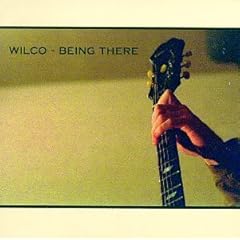Thought there was enough material to make another entry on the subject, after this I'll go on with other stuff.
Songlist:
The Marmalade – I See The Rain (1967)
Timebox - Gone Is The Sad Man (1968)
The Fox – Mr. Carpenter (1968)
Ramases And Selket – Mind’s Eye (1968)
Gentle soul – See My love (Song For Greg) (1968)
Listen to them hereThe Marmalade – I See The Rain (1967)

I See The Rain is The Marmalades flagship song which managed to become a hit in Holland, but not really anywhere else. Hendrix was apparently a big fan of this one, which isn't very strange considering the unusually heavy guitar tuning for it’s time, sounding more like something out of a grunge song. However it only serves to create a warm, comfortable sound together with the songs light hearted melancholy and slower-side-of-mid-pace.
Timebox - Gone Is The Sad Man (1968)
 This blog
This blog has already a great summary. Might as well just quote:
‘Gone Is the Sad Man’ appeared as the b-side to ‘Girl Don’t Make Me Wait’ in 1968. ‘Gone is the Sad Man’, co written by Patto and Halsall is just about a perfect example of UK psyche. It balances a dreamy texture (Halsall’s vibes help this a lot) with a biting guitar lead, a classic melody and vocal harmonies with enough phasing for the heads in the room. The influence of the Beatles is strong (as it was in probably 80% of all pop records in 1968). The tune manages to be sunny without resorting to treacle and psychedelic without wearing its “far-out-ness” on its sleeve.The Fox - Mr. Carpenter (1968)

Bouncy, up-and-go rock song which insanely catchy (or annoying, you decide) riffing will probably cause a sleepless night or two. It really is up there with I Can’t Get No Satisfaction and Rebel Rebel, only much more enjoyable since it hasn’t been overplayed to dirt.
Ramases And Selket – Mind’s Eye (1968)

Psychedelic love song with cinematic, eastern-exoticism instrumentation and a wonderfully hypnotic romantic violin riff. The instrumental track is pretty sharply contrasted by an echoing, not-all-too-skilled vocal performance by mentally unstable Martin Raphael (he started to go under the name Ramases after a revelation about him being the reincarnation of the Egyptian pharaoh) with probably sincere yet laughable lyrics ("we found ourself in outer space, to propagate the human race, there was another planet there, we lived alone with time to spare"), but these quirks doesn’t ruin the romantic side of the song and rather just add a
"far out
" feel to it’s wholeness. The
"In my mind’s eye, mind’s eye, mind’s eye… In my mind’s eye
" chorus is at least as snappy as the epic violin riff.
Gentle soul – See My love (Song For Greg) (1968)

Gentle soul was a one-album folk rock duo with psychedelic elements lead by Pamela Polland and Rick Stanley, who both sung and wrote most material as a duo. Interestingly enough this one track written and sung by Polland alone is the definite the standout, perhaps because of the artistic and egmotional lack of restraint working alone offers. See My Love is a soft folk tribute her husband and is a very skillful marriage between lyrics, melody and sound. At the center of it all is Pollans beautifully airy, somehow fragile
and strong voice, harmonized by harp, piano, guitar among other instruments to create a flowing, dreamy atmosphere, with the lyrics mostly dealing with how aesthetic and mystical her husband is… Remember, this was when the "free spirited poet" still was hot shit.
P.S Think of a guy you really like while listening ;'D































